The <I>Odyssey</I> Read online
Page 4
First, the poetry itself describes the art of narrating stories about heroes and gods through words related to “song,” never mentioning writing or even recitation. For example, the Phaiakian singer Demodokos in book 8 sings three quite different compositions, two of them resembling news flashes for his audience about the Trojan War, while the third relates how the god Hephaistos caught his adulterous wife Aphrodite. Phemios, the Ithakan bard, is shown responding to the whim of his audience (the unruly suitors of Penelopeia) by singing of the disastrous homecomings of the Greeks (including, so the suitors hope, Odysseus). Penelopeia can ask him to change the topic (Od. 1.337–44), just as Odysseus can ask Demodokos for a specific performance (Od. 8.492). Whether or not the poetry of Homer was composed in this interactive, audience-sensitive way, it at least wants to imagine its own roots in such situations. The Odyssey is a powerful story, a narrative of memory, homecoming, human need, and desire. It is also a finely woven poem, with all the power and beauty that arise from precisely used words and images. But above all, it is the result of a centuries-old tradition of audience-tested performance, a tradition that the poetry itself identifies with the singing of tales.
In Homeric Greek, the poet is a singer (aoidos) and his craft is song (aoidê)—the word that enters English eventually as “ode.” The Odyssey begins with the poet asking a goddess to tell the story of “the cunning hero.” He calls on a Muse (one of the nine daughters of Memory). Not by accident, these tale-telling divinities lend us the word “music.” Once again, Homeric poetry presents itself as something beyond ordinary speech, something closer to the special voice of the gods, an art form akin to pure harmonious sound.
The tradition of epic song-making that gave us the Odyssey is far from primitive. Instead, Homeric poetry is highly self-conscious about its own medium. The Odyssey, even more than the other major surviving epic, the Iliad, reflects again and again on the power of narrative song to enshrine the deeds of heroes and transmit them to generations to come. Consequently, in the culture that the poem depicts, singers have a place of high honor. For a would-be hero, not getting into the singer’s epic repertoire meant obliteration, as far as future renown. Put another way, the reason we know today about Odysseus and Akhilleus, Helen and Penelopeia, is because epic poetry made good on its proud and ambitious promise of immortality, “unwithering fame.” That this entire system of celebratory song depended ultimately on oral performance, rather than writing, is clear from the etymology of the very word for fame in Homeric language. For kleos, “fame” or “glory,” is literally “what is heard.” (The English word “loud” comes from the same shared root.)
Second, archaeological evidence shows that something like the Trojan War took place in the region described in the poems, with bronze weapons like those Homer described, and with resultant destruction and displacement of populations. Furthermore, the traditional ancient dating of the war, in the twelfth century B.C., fits the Homeric account of a final heroic generation. But alphabetic writing to set down either poetic or prose accounts of such a war was not available in Greece until 800 B.C. at the earliest, by the estimation of most scholars, at least another 300 years. Therefore, an oral tradition of some sort must have predated the Homeric texts.
The evidence of Homer’s language provides a third confirmation. The Odyssey’s form of Greek was never the spoken language of any one time or region. Multilayered and at times highly conservative, the Homeric “dialect” appeared to have been shaped by and for poets: among other oddities, it contains forms that have no historical basis, on comparison with other related languages, but are metrically convenient. By the same token, it retains a number of forms for a given concept (such as “belonging to me”) but only when the forms maintain usefully distinct metrical shapes—somewhat like the use in older English poetry of the synonymous forms “over” and “o’er,” which conveniently offer a poet metrical alternatives (the former two syllables, the latter one). In sum, the poetic language is traditional and arches over generations.
The fourth support for an “oral” Homer comes from the evidence of poetic diction. A young Californian, Milman Parry, in his doctoral work on the repeated “formulas” of Homeric poetry in the 1920s and 1930s found an “economy” at work when he meticulously investigated the well-known system of adjectives applied to the important personages of the poems. The characters called “swift-footed Akhilleus” and “Odysseus of much cunning” are at other lines described in the poetry as “shining Akhilleus” or “Odysseus of many devices.” When this happens, there is no perceptible shift in the narrative’s emphasis. Instead, the phrases involved produce a different metrical shape. Keep in mind that the Homeric verse line consists of six “feet,” each of the first five feet being either a “dactyl” (one long plus two short syllables, –) or a “spondee” (two long syllables, – –). The last foot of the six is either a “spondee” or a “trochee” (long + short, –, a marked, concluding rhythmic effect that McCrorie’s translation brilliantly captures). Now the adjective “swift-footed” with the name “Akhilleus” gives in Greek podas ôkus Akhilleus—a phrase that fills out a metrical position occupying two and a half “feet” of the dactylic hexameter line (–––). But substitute the adjective “shining” next to the same character’s name and you get a short metrical segment, two “feet” long (dios Akhilleus, –––). Tallying up such phrases, Parry proved that for each and every major heroic and divine figure in Homer there existed one (and almost always only one) epithet per metrical position and grammatical case (subject, object, possessive, and so forth). Therefore, Homeric poetry once again represents a traditional, multigenerational art form, for the simple reason that no one poet would have the motivation to devise such a thoroughgoing and economical system. It was probably created for the rapid composition of verse while in live performance (as the poetry indeed consistently represents itself).
The fifth argument, that of comparative evidence, is closely related: Parry and his collaborator Albert Lord found through fieldwork in the former Yugoslavia that similar extensive and convenient dictional systems were employed by illiterate performers of traditional Serbo-Croatian heroic poetry. Since their work in the 1930s, fieldworkers have confirmed this tendency in dozens of other oral poetic systems.
Given these indications, we cannot presume to read the Odyssey the way one does a written epic, whether Virgil’s Aeneid, Dante’s Divine Comedy, or Milton’s Paradise Lost. Most important, our reading must take into account the resonance of repeated phrases, since we can be certain that most such phrases were already in the poetic tradition, and thus known to an audience listening to Homeric epic performances. A poet like the composer of the Odyssey can create meaningful effects by summoning up, at just the right moment, the world of associations built into a single phrase that has been used over generations in many other poems, with a range of significations his audience would appreciate. John Miles Foley (see Bibliography) has named the resulting poetry “immanent art,” for in this medium formula-enhanced allusiveness produces depths far beyond the limpid surface of the poem. Since modern readers lack the environment in which such art first flourished, we can only hope to recover the range of a phrase’s meaning by looking at all its occurrences and calculating the effect it would have on any one scene if an audience imported into its understanding of the scene at hand a recognition of all the other situations in which a particular phrase had been or might be used. The technique differs from the novel. The reader of The Europeans or Ulysses only gradually learns, page by page, just how rich are certain phrases applied by James or Joyce to their protagonists. Every novel creates its own language, whereas Greek oral epic relied on an audience’s long experience of a rich dictional tradition, already loaded with meanings, to engage and move its hearers immediately.
Take, for example, the way in which the Odyssey’s characterization of Telemakhos happens with the help of formulaic style. The first time we see Telemakhos (1.113), Athene in the guise of Mentes has j
ust arrived at the palace in Ithaka. Telemakhos sees her before any of the others notice:
tên de polu prôtos ide Têlemachos theoeidês
Godlike Telemakhos, surely the first one to see her
Theoeidês, “in appearance like a god, ” is one of four noun-epithet formulas attested for Telemakhos in the nominative or subject case. That the poet even used an epithet for Telemakhos here, when we first see him, signals that the scene immediately following is important for our understanding of character. The epithet is like a single musical note sounded at the start of a composition. Moreover, it occurs in contrast to any of the other three epithets for Telemakhos that Homer might have used, had he molded the line a bit differently (hierê is “sacred strength,” pepnumenos “intelligent,” and hêrôs “the hero”). As the poem advances, the epithet theoeidês comes to relate to an essential theme of the Odyssey, how appearance sometimes conflicts with actual identity or ability. Odysseus (in disguise) sermonizes on “appearances” after being mocked during the games of the Phaiakians (8.166–85). In the dramatic situation of this passage, having a good “appearance” (eidos) implies that one is neither a good speaker nor, in fact, very bright. Significantly, the young islander Eurualos, who has athletic ability but no rhetorical grace, is the object of Odysseus’s admonishment, for in the course of the Phaiakian episode, we see him learn. By the end of book 8, he has the wit and poise to offer Odysseus a sword and an apology. Now, this process of education is precisely what happens to Telemakhos in the course of the Odyssey as a whole, as many critics have remarked. The adjective theoeidês marks out Homer’s handling of this traditional theme, which we can call “the hero grows up.” When an audience keyed into the traditional phrase system first hears Telemakhos described as “having the appearance of a god,” it receives a package of thematic messages and potential narrative directions. Yet this process is not without suspense. The son of Odysseus could turn out to be like others who share this epithet: Paris in the Iliad (Alexandros theoeidês), a less than heroic figure who relies on looks to get by, or Eurualos, naively arrogant but educable. In fact, each of these two thematic alternatives comes up in the course of the Odyssey: the adjective theoeidês is used three times to describe one or other of the pair of chief suitors on Ithaka, the arrogant young men Eurumakhos and Antinoos, dangerous types who dislike Telemakhos. The good-but-not-perfect youth arises as well, in the figure of the seer Theoklumenos, to whom the epithet theoeidês is applied five times, and whose very name (“god-hearing”) dovetails with its meaning. When this young fugitive encounters Telemakhos, we see an important stage in the growth of the latter; he without questioning befriends the outlaw, thus showing how he has assimilated the cultural code concerning guest-friends. Such is the artfulness of formulaic repetition that similar thematic threads can be traced by following the deployment of any epithet in the poem.
Another powerful device used by the Odyssey is characterization by speeches. It has been estimated that more than half the poem is presented in this format. As well as being a poetic style, speechmaking was most likely a key cultural phenomenon. Ancient Greeks of all periods admired rhetorical ability. The Iliad tells how Akhilleus was raised up to be a “speaker of speeches and doer of deeds” (Il. 9.443). Part of the appeal and influence of Homeric poetry on later ages comes from its excellence at mimesis, the representation of direct speech. (Plato, on the other hand, pinpointed the same mimetic technique as the central danger within Homeric epic when he banned it from the ideal city-state of The Republic.) Such speeches can be commands, threats, or promises made by one character to another; public addresses to assemblies; recollections made in the company of dinner companions; or even monologues addressed to one’s own heart and mind, like the speech Odysseus makes as he finds himself in danger of drowning (5.299–312).
Instead of telling the audience what is going on in the mind of characters in the poem, the composer makes these figures talk for themselves. As a result, we get the sense of intimacy, of intense interaction between Homeric heroes and their environment, and of the distinctive ways in which they present themselves to the world. A further refinement on the technique consists of juxtaposing the speeches of different characters in order to express conflict or imply deeper unexpressed emotions. The exchange between Helen and Menelaos in book 4 (lines 235–89), as each tells a story for the benefit of their visitors, represents this contrastive art at its highest form. Without a hint from the narrator’s own voice, the impression is nevertheless created that the aging hero and his wife who once caused so much destruction are still immersed in their mutual grievances and protestations. The series of encounters between Odysseus and his wife Penelopeia, extending from book 19 through book 23, allow us to intuit the shape of their relationship more than any information the narrator could have relayed. And the close parallels created by such serial use of direct speeches—for example, the five fictions told by the disguised Odysseus on Ithaka, or the encounters Telemakhos has with Nestor and Menelaos—further enrich the poem by subtle variations. Whereas with the formula the poet plays on an audience’s shared knowledge of allusion and association, with speeches the poet can produce new and multiple points of view.
A third characteristic technique, the simile, might be seen as a combination of the traditionality of the formula and the innovative use of speech. The Homeric simile often includes more detail than we might think necessary to make a comparison. Consider two examples that occur at the start of book 20 as Odysseus, lying awake, grows angry at the sight of serving women who sleep with the suitors:
… The heart grumbled inside him
the way a dog will growl, standing over her tender
pups and anxious to fight with a man she does not know.
His heart growled that way. Their wrongdoing vexed him.
(lines 13–16)
After describing how Odysseus subdues his anger—“But shortly he struck his breast and scolded his own heart”—the poet continues:
His heart obeyed him well: it bore up and stayed firm.
Yet the man went on tossing this way and that way
much like a cook at a blazing fire, turning a stomach
packed with blood and fat this way and that way,
moving it as fast as he can, longing to roast it.
So Odysseus tossed both ways and he wondered: (lines 23–28)
The seemingly extraneous details, however, evoke many things that a briefer comparison misses. If the poet had simply said “his heart growled like a dog,” the image might strike us, but a chance for further emotional impact would be lost. The expanded version, in a manner both oddly out of synch and entirely appropriate, associates Odysseus with a female figure—the mother of the puppies—who barks to defend them against an intruding male. In terms of the overall plot, Odysseus (by way of the simile) has become like Penelopeia, a fiercely independent female resisting male incursions in her house. More immediately, we might be reminded of the scene not long before, when Odysseus, arriving in disguise at his own palace, is recognized by Argos, the hound he left behind twenty years previously. Now tick-ridden and uncared for, unable to move from the dung-heap where he lies, the dog wags his tail pitifully and, as his old master passes by, expires (17.290–327). The slight dissonance created by the simile reminds the audience that Odysseus, though apparently old and useless at the moment (like Argos), will soon take on the role of watch-dog and even hunter, as he punishes the suitors. Similes, therefore, artfully employ in a compressed format two other techniques frequent in Homeric poetry, the use of flashbacks and of foreshadowings.
The second simile mentioned above, in which the hero is compared with a sausage, might seem at first comically commonplace, even arbitrarily antiheroic. The only apparent point of connection comes from the similarity of movement, as both hero and meat revolve like rotisseries. Yet again, Homeric technique relies on our recognition of the gap between the immediate plot-event and the rhetorical reshaping of it. Odysseus cannot sleep becau
se he is at a moment of crisis, anxious about his ability to plan and carry out a slaughter, while the anonymous cook in the simile only has to deal with food preparation. Nevertheless, we can imagine that the veteran fighter might well yearn to be the peacetime chef, so that the simile then is “focalized” by the very consciousness of the character it purports to describe. It is worth recalling, after all, that the very first time we glimpse Odysseus in the poem he is longing to see the smoke rising from his native hearth. Furthermore, the cook and the hero both crave something deeply. The cook’s longing is made explicit—he wants to have roasted meat—and he, at least, has the means to carry this out. By bringing to mind such a universal want, the poet makes his audience feel, almost taste, the overwhelming immediacy of Odysseus’s desire for revenge, without at this point even mentioning it. The implication is that Odysseus, too, will soon be in charge (not to say cook the suitors’ goose). Finally, both similes in this cluster, the dog and the cook, make public, at least in their memorable imagery, otherwise internal, private movements of thought. By reference to recurrent everyday actions, they make natural and unproblematic what is in fact a one-time, somewhat questionable, revenge of epic proportion.
History and the Odyssey
The advances made by archaeology, linguistics, and the comparative study of culture over the past century have made it clear that the world depicted by the Homeric epics is a poetic creation. It has elements of eras in Greek civilization reaching from 1400 B.C. to the Peisistratid period in Athens, in the mid-sixth century. Like Greek culture, it has absorbed influences from the Near East and Egypt, perhaps even from the Black Sea and beyond. At the same time, the basic elements of the Homeric world are constants in Mediterranean history and social life: the crafts of fighting and sailing; trade; colonization; viticulture and agriculture; and settlement-building. Although techniques in all of these change over the centuries, the activities themselves show long stretches of continuity, even into the twenty-first century.

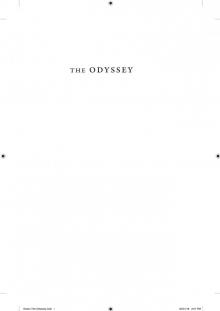 The Odyssey
The Odyssey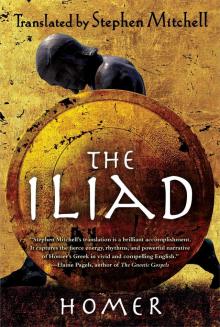 The Iliad
The Iliad The Iliad (Trans. Caroline Alexander)
The Iliad (Trans. Caroline Alexander)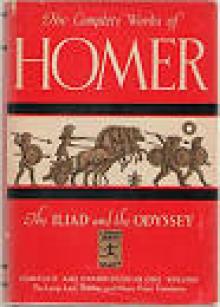 Complete Works of Homer
Complete Works of Homer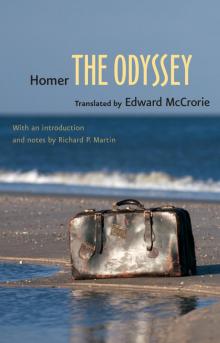 The <I>Odyssey</I>
The <I>Odyssey</I>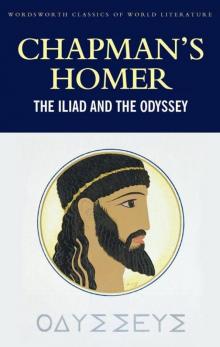 The Iliad and the Odyssey (Classics of World Literature)
The Iliad and the Odyssey (Classics of World Literature) Troy
Troy The Iliad (Penguin Classics)
The Iliad (Penguin Classics) Delphi Poetry Anthology: The World's Greatest Poems (Delphi Poets Series Book 50)
Delphi Poetry Anthology: The World's Greatest Poems (Delphi Poets Series Book 50)